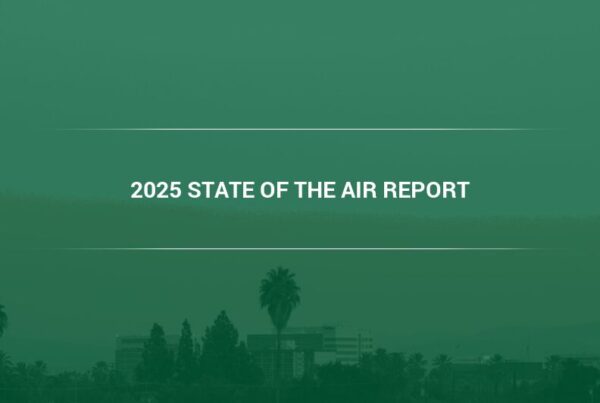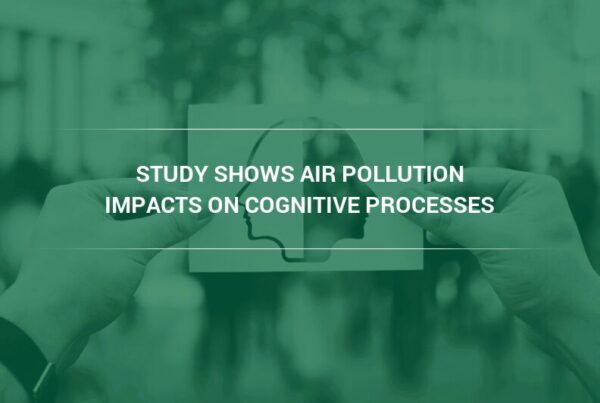According to a 2023 study of over 200,000 heart attack deaths in China published in the American Heart Association’s flagship journal Circulation, the risk of death from heart attack may double due to the combination of extreme heat and high levels of fine particulate pollution.
In this article, air quality experts from global air filtration manufacturer and engineering company Camfil explain the findings of the study and their implications for people living in the United States.
Particulate Matter Air Pollution and Heart Health
Previous research in the field has established that fine particulate matter exposure, both short- and long-term, is linked to an increased risk of heart disease, stroke, and other cardiovascular issues.
Fine particulate matter, which is defined as any solid or liquid particle suspended in the air with a diameter of 2.5 microns or less, is small enough to bypass the natural defenses in the lungs and trachea, allowing it to be inhaled deep into the lungs and cause irritation to blood vessels around the heart.
According to scientific statements and policy statements from the American Heart Association, addressing air pollution and its effects on heart disease and stroke is crucial in reducing health disparities, particularly in historically marginalized and under-resourced communities, as well as communities with high levels of air pollution exposure.
Researchers Link Heart Attack Deaths to Heat Waves and Short-term Air Pollution Exposure
The researchers analyzed 202,678 heart attack deaths that occurred between 2015 and 2020 in China’s Jiangsu province. Located on the coast of the East China Sea and just north of Shanghai, Jiangsu experiences four distinct seasons and a wide range of temperatures and particulate pollution levels throughout each year. The average age of death was 77.6 years, and 52% of patients were male.
The analysis included particulate exposure on the day of each death and the day prior to the death. Researchers used the daily heat index (the “feels like” number in weather forecasts that considers the effects of both heat and humidity on the human body) to define extreme weather conditions:
- Heat waves were defined as periods of at least 2, 3, or 4 consecutive days when temperatures fell in the 90th, 92.5th, 95th, and 97.5th percentiles of daily heat indexes (82.6 to 109.4 degrees Fahrenheit); these heat waves were further categorized by their intensity (higher temperatures) and length.
- Cold snaps were defined as periods of at least 2, 3, or 4 consecutive days when temperatures fell in the 10th, 7.5th, 5th, and 2.5th percentiles of daily heat indexes (27 to 40.5 degrees Fahrenheit); cold snaps were also further categorized based on length and intensity (lower temperatures).
- Days with an average level of fine particulate matter exceeding 37.5 micrograms per cubic meter were classified as having high particulate levels.
- During these periods, the number of deaths caused by heart attacks, or case days, were compared to control days. Control days were chosen as the same day of the week in the same month. For example, if a death occurred on a Wednesday, all other Wednesdays in the same month were considered control days.
The risk of a fatal heart attack was observed at the following levels when compared to control days:
- 18 percent higher during two-day heat waves with 90th percentile heat indexes or higher
- 74 percent higher during four-day heatwaves with 97.5th percentile heat indexes or higher. Rates were twice as high during four-day heatwaves with particulate matter concentration higher than 37.5 micrograms per cubic meter compared to those with lower particulate matter concentrations.
- 4% higher during two-day cold snaps with 10th percentile heat indexes or lower
- 12% higher during three-day cold snaps with 2.5th percentile heat indexes or lower. (Particulate matter did not have a statistically significant effect on death rates during cold snaps.)
- Notably, risk of fatality was greater among women than men during periods of extreme weather, and patients over the age of 80 were the most likely to be affected by the increased risk.
In summary, particulate matter and excessively hot temperatures both increased the risk of heart attack death significantly, but when both occurred at the same time, there was a synergistic effect, meaning that it was greater than the sum of the individual effects.
Based on the data, researchers estimated that 2.8% of global heart attacks may be attributable to the combination of record-breaking temperatures and levels of fine particulate matter exceeding World Health Organization target levels (greater than 37.5 micrograms per cubic meter).
Indoor Air Pollution & Particulate Matter Exposure
Particulate matter in indoor air is a major concern, as it can significantly contribute to poor air quality and increased risk of heart attack death. Studies have shown that high levels of particulate matter in the home, such as from cooking and heating activities, can increase exposure to harmful particulates. Taking steps to reduce sources of indoor air pollution and limiting exposure to high levels of fine particulate matter is essential for avoiding adverse physical and mental health effects.
For the best results, choose a high-efficiency, premium air filter compatible with the building’s HVAC system. Consider adding supplementary room air purifiers with individually factory-tested and certified HEPA filters to remove 99.995% of the finest particulate matter from the air.
About Camfil Clean Air Solutions
For more than half a century, Camfil has been helping people breathe cleaner air. As a leading manufacturer of premium clean air solutions, we provide commercial and industrial systems for air filtration and air pollution control that improve worker and equipment productivity, minimize energy use, and benefit human health and the environment. We firmly believe that the best solutions for our customers are the best solutions for our planet, too. That’s why every step of the way – from design to delivery and across the product life cycle – we consider the impact of what we do on people and on the world around us. Through a fresh approach to problem-solving, innovative design, precise process control, and a strong customer focus we aim to conserve more, use less and find better ways – so we can all breathe easier.
The Camfil Group is headquartered in Stockholm, Sweden, and has 30 manufacturing sites, six R&D centers, local sales offices in 35+ countries, and about 5,600 employees and growing. We proudly serve and support customers in a wide variety of industries and in communities across the world. To discover how Camfil USA can help you to protect people, processes and the environment, visit us at www.camfil.us/
##
Media Contact:
Lynne Laake
Camfil USA Air Filters
T: 888.599.6620
E: Lynne.Laake@camfil.com
F: Friend Camfil USA on Facebook
T: Follow Camfil USA on Twitter
Y: Watch Camfil Videos on YouTube
L: Follow our LinkedIn Page
https://www.epa.gov/air-research/air-pollution-and-cardiovascular-disease-basics



